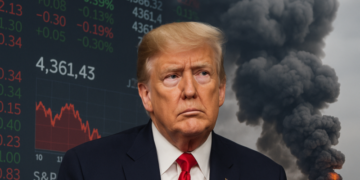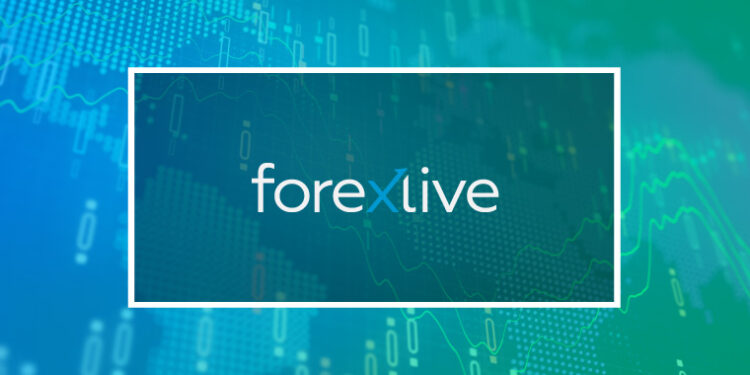- Sat: Australian Election
- Mon: Hong Kong Holiday (Buddha’s Birth), Japanese Holiday (Children’s Day), UK Holiday (Bank Holiday); Swiss CPI (Apr), EZ Sentix (May), US ISM Services PMI (Apr), Turkish CPI (Apr)
- Tue: Chinese Caixin Services PMI (Apr), EZ Composite/Services Final PMI (Apr), Producer Prices (Mar), US International Trade (Mar), New Zealand Unemployment (Q1)
- Wed: FOMC, BCB & CNB Policy Announcements, RBNZ Financial Stability Report; German Industrial Orders (Mar), Swedish Flash CPIF (Apr), EZ Retail Sales (Mar), US MBA (w/e 28th Apr)
- Thu: BoE, Riksbank & Norges Bank Policy Announcements, BoC Financial Stability Report, BoJ Minutes (Mar); German Industrial Output (Mar), Trade Balance (Mar), US Initial Jobless Claims (w/e 3rd May)
- Fri: Norwegian CPI (Apr), Canadian Jobs Report (Apr), Chinese Trade Balance, New Yuan Loans & M2 (Apr)
Australian Election (Sat):
Australia heads to the polls on Saturday, May 3rd, to elect all 150 members of the House of Representatives and 40 of the 76 Senate seats. The incumbent Labor government, led by PM Albanese, seeks a second term, while the Liberal-National Coalition, under Peter Dutton, aims to return to power after one term in opposition. YouGov’s final MRP model projects Labor securing 84 seats, (up from 77 in 2022), while the Coalition is expected to fall to 47 seats, its lowest since 1946. The two-party preferred vote stands at 52.9% for Labor and 47.1% for the Coalition. Polling stations open from 8:00 AM to 6:00 PM local time. Early voting has seen high turnout, with nearly 40% of voters casting ballots ahead of election day. While Labor is favoured by the bookies to win, the possibility of a hung parliament remains.
Swiss CPI (Mon):
March’s inflation came in markedly cooler than newswire consensus at 0.3% (exp. 0.5%), a reading which left the Q1 average just over the 0.3% mark, slightly cooler than their most recent forecast from March (0.4%). At the time, the data marginally increased the odds of further SNB easing from the current 0.25% rate. Since, as the CHF has benefitted markedly (though is off best) as a haven amid the Trump tariffs, the odds of easing have increased with a cut to 0.00% roughly 80% implied in June. As such, the April release will provide insight into whether pricing is over/under-baking the likelihood of a cut to 0% at this stage. However, there are still numerous more data prints before the June meeting and on the subject of an FX-driven move, typically this is dealt with via intervention though the US’ approach to ‘rule breakers’ potentially limits the SNBs hand on this. For reference, the SNB’s March meeting forecasts have the Q2 CPI average at 0.2% Y/Y.
US ISM Services PMI (Mon):
The consensus expects the Services ISM headline to moderate a touch to 50.6 from 50.8, remaining above the crucial 50.0 line that separates expansion and contraction. As a point of comparison, the S&P Global Flash US Services PMI’s Business Activity Index fell to a two-month low of 51.4 in April from 54.4 in March. The report stated that service sector activity growth slowed sharply to a modest pace, the second weakest in a year, amid softer order book gains. New business inflows were subdued, with respondents citing uncertainty over the economy and tariffs. Export demand, including tourism and cross-border services, fell at the steepest rate since January 2023. Meanwhile, service sector optimism fell to its lowest since October 2022, with more firms citing concerns over government policy and economic uncertainty; although more companies still expect output to rise than fall, net sentiment remains well below long-run averages. Meanwhile, service sector prices rose at their fastest pace in seven months in April, driven by higher raw material and labour costs; input cost inflation eased slightly from March, but it was still the second highest in six months, with tariffs and import prices contributing to broader inflationary pressures. S&P Global said that the “services economy is slowing amid weakened demand growth, notably in terms of exports such as travel and tourism,” adding that “confidence about business conditions in the year ahead has meanwhile deteriorated sharply, worsening among manufacturers and service providers alike, largely thanks to growing concerns about the impact of recent government policy announcements.”
Chinese Caixin Services PMI (Tue):
China will release the April Caixin Services PMI on Tuesday, following a modest pickup in March (51.9, highest since December). This month’s print will be closely scrutinised for signs of weakening momentum amid an escalating US-China trade war. Recent data suggests a deteriorating outlook – the official non-manufacturing PMI slipped to 50.4 in April (prev. 50.8), while the services sub-index also dipped. Analysts expect the Caixin print to reflect similar softness. Employment remains a key concern, with services staffing declining at the fastest pace in nearly a year last month, and both resignations and cost-related redundancies cited by firms. Desks say any further deterioration in the Caixin data could bolster the case for targeted stimulus, especially as Beijing faces growing pressure to stabilise consumption and services-led growth amid external shocks. Caixin’s composite PMI and updated services sector sentiment will be watched for confirmation of whether March’s modest recovery is proving durable.
Chinese FX Reserves (Wed):
China will release foreign exchange reserve figures on Wednesday. Desks suggest any notable declines could fuel speculation that Beijing is quietly offloading US Treasuries, possibly in response to Washington’s aggressive trade policies. However, desks note that any moves will likely be measured. On the data, analysts at ING suggest, “Markets will look for any significant deviations to see if China is selling US Treasuries.”
FOMC Announcement (Wed):
The latest Federal Reserve rate decision is on Wednesday 7th May at 14:00EDT/19:00BST, with Chair Powell’s press conference following 30 minutes later. We will not get updated SEPs at this confab and will have to wait until the June meeting for updated forecasts. The central bank is widely expected to keep rates unchanged at 4.25-4.5%, with almost all surveyed by Reuters seeing that as the outcome, although Citi is a notable outlier and sees a 25bps cut. In terms of Refinitiv money market pricing, it currently assigns just a 3% probability of a 25bps reduction. Heading into the meeting, Fed Chair Powell’s recent remarks have seen him continue to toe the line that the Fed is well-positioned to wait for greater clarity before considering altering its policy stance, sticking to his ‘wait-and-see approach’. However, other influential officials, such as Governor Waller, have leant dovish while there is also significant pressure from US President Trump for the Fed to lower rates, as he continues to stress the Fed is moving too slowly. Powell has been calling for more patience, given the expected impact of tariffs (growth slowdown, inflation increase) puts the Fed in a difficult position, and they want to wait and see how the new administration’s policies impact the hard data. However, Waller has suggested this risks the Fed acting too late. As expected, a lot of the focus currently resides around the impact of Trump’s tariffs, and how much of the impact has filtered through yet into the economy, if any. The soft and hard data are currently showing differences, although Q1 US GDP slipped into contractionary territory, but labour data has been solid with no marked weakness, yet. On the other side of the mandate, inflation remains “somewhat elevated”. However, the last CPI/PCE prints were consistent with Morgan Stanley’s expectation of disinflation through April. In the statement, Morgan Stanley expects the Fed to downgrade their assessment of economic activity—indicating it has “moderated from” rather than having “continued to expand at” a solid pace. MS also expect the statement to highlight the “elevated” risks to the Fed’s dual mandate.
Swedish CPIF (Wed):
Serves as the final data point before the Riksbank announcement on Thursday (see below). In March, the series printed cooler than expected with the CPIF ex-energy Y/Y figure coming in at 3.00% (exp. 3.2%, prev. 3.00%); however, much of this miss was explained by unexpected travel variations after the components re-weighting. For April, travel is likely to be inflationary, and SEB looks for a CPIF ex-energy print of 3.3% (Riksbank exp. 3.2%). Further out, the re-weighting of travel in the inflation basket means such price variations may continue and provide, likely temporary, upward pressure during the summer period before dissipating into the end of 2025. It is currently unclear as to how reactive the Riksbank will be to such price variations, with Seim describing the lower March reading as a welcome surprise but made clear (on April 10th) that it was too soon to say what decision would be taken in May. Note, that Swedish Finance Minister Svantesson said at the end of April that the factors arguing for lower inflation ahead outweigh the ones pointing to higher prices.
BoE Announcement (Thu):
Consensus unanimously expects the BoE to cut the Base Rate by 25bps from 4.5% to 4.25% with markets fully pricing in such an outcome. The decision to cut rates is expected to be 9-0, however, some desks expect external member Dhingra to back a larger 50bps reduction. Morgan Stanley suggests that either Mann or Taylor could also join Dhingra, making a 7-2 split on the magnitude. Note, that a reduction at the upcoming meeting would be in-fitting with the MPC’s preferred cadence of cutting at every other (and MPR) meeting. Of greater interest will be how the MPC positions itself for rate cuts going forward. Analysts at ING expect the Bank to reiterate that future cuts are likely to be “gradual and careful”. Morgan Stanley expects this phrase to be removed but for the term “restrictive” to remain in place. MS makes the argument that dropping the language around “gradual and careful” will provide the MPC “space to accelerate cuts if needed”. However, ING pushes back on this view by noting that markets are incorrect to price three cuts at the next four meetings, making the argument that such pricing is largely linked to the Fed and not a domestic story. ING adds that for such a pace of cuts to take place, a few things would need to happen, such as clearer evidence that the UK economic outlook is materially deteriorating, a US recession that impacts UK services (UK goods are unlikely to see much direct effect from tariffs) or a more pronounced cooling in the UK labour market. Furthermore, services inflation in the UK remains particularly stubborn despite expectations that it is expected to decline. For the accompanying MPR, ING expects a reduction in the 2025 inflation forecast and an upgrade to the 2025 growth forecast due to the better run of data seen in Q1. The desk sees no major changes to the medium-term outlook.
Riksbank Announcement (Thu):
Expected to leave rates at 2.25% though markets imply around a 25% chance of a 25bps cut; note, as outlined above, April’s CPIF is due the session before the policy announcement. In March, the Riksbank left rates unchanged and guided the policy rate to remain at current levels ahead with the repo path looking for it to be unchanged as far out as Q1-2028. Since that meeting, inflation ticked up before coming back down in March. On the uptick, officials made clear that there are reasons to believe the uptick is temporary and they have the scope to look through them, pushing back on some calls for tighter policy. More recently, the narrative has switched to a cut driven by the global economic pressure that is beginning to be felt from Trump’s tariffs and associated reciprocal measures, however, the board has made clear that inflation is the priority and while we may see an uptick in the series through the summer, the general view is that the pricing bias is currently to the downside. Overall, the Riksbank is likely to remain on hold as guided while it waits for further clarity on the pricing situation and impact of tariffs; the board could acknowledge the uncertainty by stating it is prepared to act if required, but SEB believes it will judge the risks to the policy rate as being broadly balanced.
Norges Bank Announcement (Thu):
Markets price in around a 15% chance of a cut with the next 25bps move not fully priced until August and just under three 25bps hikes implied by end-2025. The March forecast meeting saw rates maintained at 4.50% as expected and the forecast path and assessment implying that a cut will likely occur in 2025, though the forecasts themselves were subject to hawkish adjustments and while two cuts are potentially implied. It is heavily skewed to just one in 2025. Since, the most important domestic development has been the cooler March inflation print, which factors on the dovish side, however, the broader economy is holding up and offsets calls for a cut in May. Overall, a cut cannot be ruled out (as was the case in March) but given the relative economic resilience and hawkish adjustment to the repo path in March, a hold is the base case for May.
Canadian Jobs Report (Fri):
The April Canada jobs report will be gauged to see how the labour market is faring in the wake of US President Trump’s tariffs. The latest BoC summary of deliberations shows that members agreed the economy would slow in 2025 as tariffs on exports to the US and uncertainty about trade policy were weighing heavily on business and consumer sentiment. It also noted how the job market recovery that began in late 2024 appeared to have stalled as trade tensions escalated. Job postings had been slowing. It also found in surveys that businesses indicated that they were scaling back hiring in the face of trade uncertainty. The last BoC decision saw the bank hold rates, against split expectations for a hold or cut. The latest minutes also revealed that the governing council was split over whether to cut or hold. A deteriorating labour market would bolster the case for further rate cuts, but there is still tremendous uncertainty ahead on the US trade policies and how they affect the Canadian economy. The BoC provided two economic scenarios. In the first, uncertainty is high, but tariffs are limited in scope, with Canadian growth weakening and inflation remaining around the 2% target. If inflation remains around the 2% target, and the economy and labour market slow, it would make it easier for the BoC to lower rates. In the second scenario, a protracted trade war causes Canada’s economy to fall into recession and inflation rises above 3% next year. This puts the central bank in a difficult position with growth declining and inflation rising.
Chinese Trade Balance (Fri):
China is set to release its April trade data on Friday, offering the first look at how the recent escalation in tariffs has impacted the second-largest economy in the world. Desks expect a sharp contraction in both exports and imports, with double-digit Y/Y declines likely. Exports to the US, which account for some 14–15% of China’s outbound shipments, are expected to have slowed significantly. Recent Chinese PMI data also already flagged softness in external demand, while weakness in manufacturing input demand implies a drop in import volumes. While some redirection of US-bound trade toward other markets may occur, analysts at ING caution this will not fully offset the near-term drag, as rerouting supply chains are neither immediate nor frictionless.
This article originally appeared on Newsquawk















